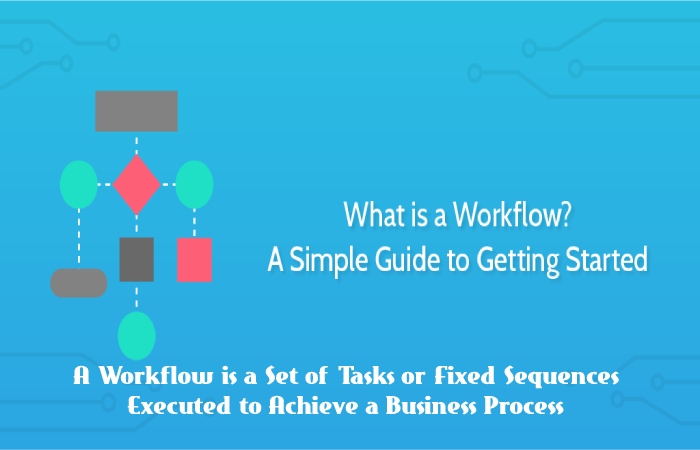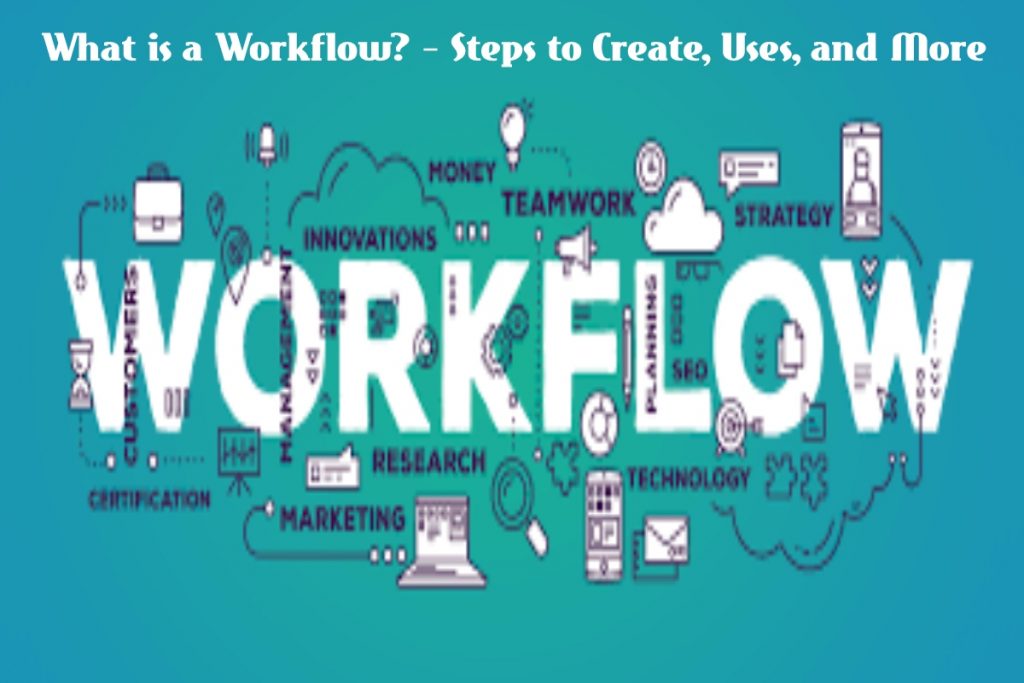What is a Workflow?
A workflow is a set of tasks or fixed sequences executed to achieve a business process according to a group of predefined rules. It automates all or part of the business process. It executes with precision, ensuring that the required information and documents flow smoothly from one participant to another.

Steps to Create an Online Workflow
By following these humble steps, you can create your workflow for any business process. Automated workflow management gears like Kissflow Workflow let you do this, even without knowing how to code.
Here are the 7 steps to create online workflows:
1. Identify your Resources
To replicate and improve existing workflows, you essential to understand how they manage now. Are workflows fully managed using paper forms? Are there digital forms and discussion threads? Where or who do people send completed or approved documents to?
The resources that brand up a workflow are not limited to forms and operating procedures; they also include the people involved in the ongoing process. Before you create a workflow for a specific technique, talk to the process owners and learn about the issues they face in the current method.
For example, if you’re creating a budget approval request, contact your finance team and find out how they handle the process manually. Find out what they expect from an online workflow and try to replicate it.

2. List the Tasks that must Perform
Workflows with little or no construction have a linear route of tasks to complete. In contrast, highly structured workflows have a sequence of graphical functions that must perform in parallel or conditional tasks before proceeding to the next step. It is essential to understand the job structure fully, and the data exchanged in the functions before designing an online workflow.
For example, a travel reimbursement endorsement workflow needs to get expense data from the initiator and pass it to the manager. The administrator only needs to view the data, not modify it. While approved requests can submit to the finance team for processing with an approval note, rejected requests should return to the requester with specific reasoning.
3. Find Out Who is Responsible for each Step and Assign Roles
Once you know the structure and nature of the task, take a look at who will be part of it. Some jobs may automatically proceed to the next step, while others may need to be approved or reviewed by someone before moving to the next stage.
Please note all the stakeholders, their specific responsibilities in the process, and the information they need to get the job done quickly. Based on this, create particular roles and establish accountability for each task.
An employee might need permission to start a leave request (entry task). In contrast, the manager only needs to approve or reject it based on specific criteria (approval task). Other stakeholders, such as finance and human resources staff, may only need to see the approval status.
4. Create Workflow Diagrams to Visualize the Process
Now that you do with the initial basics, you can start sketching your workflow diagrams. By creating a workflow diagram, you can get a visual representation of the entire.
Unless you are very proficient in business process modeling, go for a simple workflow management tool that lets you create workflows using visual drag-and-drop tools. Choose an easy-to-use tool that is flexible enough to draw a workflow that is a digital version of the workflow on paper, regardless of the complexity of the process.
5. Test the Workflow you Created
If you created the workflow, this should be the last step. Not really. You can’t move your processes online without testing them.
On the outside, every workflow can look faultless. You will never really know its flaws if you test it rigorously. Instead of doing this step on your own, involve the people who are part of it. They will help you identify problems faster and find out what works and what doesn’t. Collect your feedback and use the data to modify and improve your automated workflow.
6. Train your Team on the New
Your workflow can work like a charm, but that doesn’t close the deal. People do.
Even though people have helped provide feedback, helping you design, and testing, they may be reluctant to abandon your current practice. And it is above all the fear of the unknown.
A good training program will remove their doubts and give them the confidence to use the new.
Sharing the “workflow creation” process and its diagrams will help students better visualize what the workflow is doing, where each task locate, and its specific role in it.
7. Implement
Once you have completed the test and training phase, it is ready to go. As a precaution, it is best to leave the workflow in the hands of a small team and see how it works in real-time. Depending on the results, you can go ahead and share them with your entire organization or withdraw the change request.
You can continuously go back and create a whole new one when you have a new requirement. In the case of a policy change or additional requirements, you can always choose to roll out a recent version or update the existing one regularly.
Why Use Workflow?
Workflows streamline tangled business processes, minimize the complexity of repetitive tasks, and improve overall efficiency. In addition to structure and simplicity, workflows provide many other benefits, such as linking data fields to a master dataset. Workflows are important because:
- Streamline processes
- Eliminate redundant tasks
- Identify bottlenecks and gaps in the process.
- Improve accountability
- Reduce micromanagement
- Keep the process transparent
- Improve collaboration
- Deliver more actionable business insights
However, creating from scratch is not an easy task.
A challenge for the workflow designer is keeping the big picture in mind when working with forms and conditions. That is why it is essential to understand the entire process better before you start looking for a tool to build.
Conclusion
The process of creating an online and implementing it can seem overwhelming, but with the right code less workflow platform like Kissflow, anyone can automate the workflow in no time. Give Kissflow Workflow a try and see if it’s the right tool for creating online workflows.
Also Read: Top 5 Best Task Management Software for Creative Teams 2021
Related Searches:
[workflow examples]
[workflow meaning]
[what is a workflow layout]
[workflow vs process]
[workflow define]
[what is workflow management]
[what is a workflow in accounts payable]
[what are the 3 basic components of workflow]


